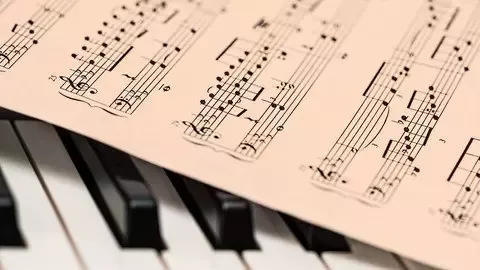
Udemy Music Theory TUTORIAL
This course introduces students to the basics of music notation, including rhythm, pitch, and expressive markings. Students also learn to construct and identify rudimentary harmonies, including intervals (two-note chords), triads (three-note chords), and seventh chords (four-note chords).
During and after each lesson you will be given short tasks to complete. Some will be available for download in the resources of the lesson. There will also be a test for a few lessons.
Assumes no previous familiarity with Western musical notation. However, each lesson in this course assumes familiarity with all preceding lessons; for that reason, it is recommended that chapters are studied in order. This course is designed for a wide audience, including high school students (and those taking AP Music Theory), collegiate non-music majors (and musical theater majors), and collegiate music majors.
Program:
- Introduction to Western Musical Notation
- Notation of Notes, Clefs, and Ledger Lines
- Reading Clefs
- The Keyboard and the Grand Staff
- Half Steps, Whole Steps, and Accidentals
- American Standard Pitch Notation (ASPN)
- Other Aspects of Notation
- Rhythmic and Rest Values
- Simple Meter and Time Signatures
- Compound Meter and Time Signatures
- Other Rhythmic Essentials
- Major Scales, Scale Degrees, and Key Signatures
- Minor Scales, Scale Degrees, and Key Signatures
- Introduction to Diatonic Modes and the Chromatic “Scale”
- The Basics of Sight-singing and Dictation
- Intervals
- Triads
What you’ll learn
- Encouragement to think ways they can write (or jot down) theirs favorite song or composition
- Learning notation of heights and the expressive and stylistic conventions of the Western musical notation.
- Introducement to the conventions of Western rhythmic notation
- Learning identification of scales, key signatures, the diatonic modes, and the chromatic collection
- Share on Facebook




